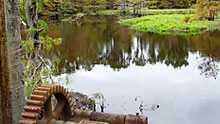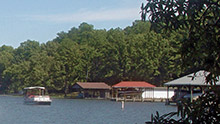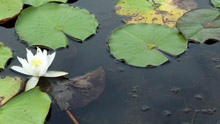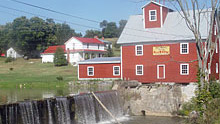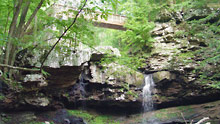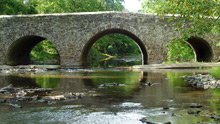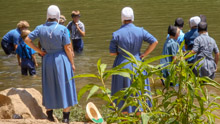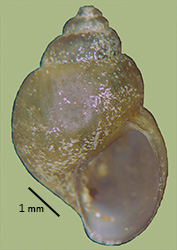> Habitat & Distribution
Thompson (1968) mapped the distribution of Spilochlamys conica as "Gulf drainages of Florida from the Waccasassa R through the lower Suwannee west as far as the Sopchoppy River." Populations of the closely-related S. gravis are widespread in St. Johns tributaries to the east. We are aware of approximately ten populations of S. conica in the 11-county slice of the Florida panhandle covered here, and another ten in Middle Flint River tributaries of Georgia. Thompson described the typical habitat as "springs and spring runs, with plants over a soft sand-silt bottom." FWGNA incidence unranked.
> Ecology & Life History
Hydrobiids seem to be rather nonspecific grazers of small particles (Dillon 2000: 94-97). They are typically dioecious, the males being characterized by a penis that arises from the neck. Females attach single eggs in spare, hemispherical capsules to solid substrates (Hershler 1994). No specific life history data are as yet available for S. conica.
> Taxonomy & Systematics
Thompson (1968) described his new hydrobiid species conica from Natural Bridge Springs, in the St Marks River drainage of Leon County, Florida. This species he grouped with his newly-described gravis from the St. John River system to the east into a new genus Spilochlamys, which he differentiated from the most closely related Notogillia and Cincinnatia by the arrangement of the glands on its typically-nymphophiline penis.
The genus was retained, along with such other nymphophiline genera as Marstonia, Floridobia, and Pyrgulopsis, in the new, pared-down Hydrobiidae (ss) by Wilke and colleagues (2013). Although no sequence data are available as yet for Spilochlamys conica, a CO1 sequence obtained by Hershler et al (2003) for an individual Spilochlamys gravis confirmed close evolutionary relationships with Notogillia and Cincinnatia.
> Maps and Supplementary Resources
> Essays
- Earlier versions of this website, online until August of 2016, adopted the large, broadly-inclusive concept of the Hydrobiidae (sl) following Kabat & Hershler (1993). More recently the FWGNA project has shifted to the Wilke et al. (2013) classification system, distinguishing a much smaller Hydrobiidae (ss) and elevating many hydrobioid taxa previously ranked as subfamilies to the full family level. For more details, see The Classification of the Hydrobioids.
> References
Dillon, R. T., Jr. (2000) The Ecology of Freshwater Molluscs. Cambridge, Cambridge University Press. 509 pp
Hershler, R. (1994) A review of the North American freshwater snail genus Pyrgulopsis (Hydrobiidae). Smithsonian Contributions to Zoology 554:1-115.
Hershler, R., H. Liu, and F.G. Thompson (2003) Phylogenetic relationships of North American nymphophiline gastropods based on mitochondrial DNA sequences. Zoologica Scripta 32:357-366.
Kabat, A.R., and R. Hershler (1993) The prosobranch snail family Hydrobiidae (Gastropoda: Rissooidea): review of classification and supraspecific taxa. Smithsonian Contributions to Zoology 547:1-94.
Thompson, F.G. (1968) The Aquatic Snails of the Family Hydrobiidae of Peninsular Florida. University of Florida Press, Gainesville, Florida, USA.
Thompson, F.G. (1969) Some hydrobiid snails from Georgia and Florida. Quarterly Journal of the Florida Academy of Sciences 32:241-265.
Thompson, F.G. (1999) An identification manual for the freshwater snails of Florida. Walkerana 10: 1 96.
Thompson, F. G. & R. Hershler (2002) Two genera of North American freshwater snails: Marstonia Baker, 1926, resurrected to generic status, and Floridobia, new genus (Prosobranchia: Hydrobiidae: Nymphophilinae). The Veliger 45: 269 - 271.
Watson, C. N. (2000) Results of a survey for selected species of Hydrobiidae (Gastropoda) in Georgia and Florida. pp. 233 - 244 in Freshwater Mollusk Symposium Proceedings (Tankersley et al, eds) Ohio Biological Survey, Columbus.
Wilke T., Haase M., Hershler R., Liu H-P., Misof B., Ponder W. (2013) Pushing short DNA fragments to the limit: Phylogenetic relationships of hydrobioid gastropods (Caenogastropoda: Rissooidea). Molecular Phylogenetics and Evolution 66: 715 736.

